JournalismPakistan.com | Published May 19, 2015
Join our WhatsApp channel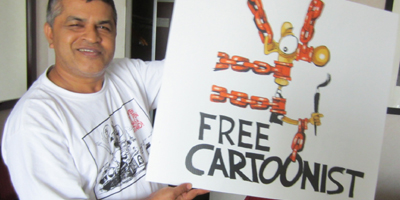
NEW YORK: Grave dangers confront those who draw satirical and political cartoons, but threats against cartoonists are a global phenomenon and are as diverse as the content of the cartoons themselves, according to a report released today by the Committee to Protect Journalists.
In one case examined in the report, political cartoonist Zulkiflee Anwar Ulhaque (pictured), known as "Zunar," faces more than 40 years in prison if found guilty of sedition during a trial that is due to begin in Malaysia on May 20.
"Attacks and threats from Islamic extremists have brought the risks for cartoonists into high relief, but the threats also come from governments," said Joel Simon, CPJ Executive Director. "Editorial cartoons have the ability to convey complex themes in a simple yet profound manner that easily crosses borders and languages. What makes these cartoons so powerful is also what makes cartoonists so vulnerable."
The risks stem largely from criticism of authority figures, commentary on current affairs, and portraying religious symbols. Thanks to social media, cartoons are reaching more people than ever before, but that reach means enemies of the press are able to more easily monitor and respond to content they deem objectionable.
Political cartoonists in Iran, South Africa, and Venezuela are among those who have faced lawsuits, fines, harassment, and imprisonment over their satirical take on leaders and government policy. In Ecuador, the cartoonist Xavier Bonilla may face criminal charges over a montage jabbing at the fumbling speech of a politician in President Rafael Correa's ruling party. His newspaper, El Universo, was ordered to run an apology for seven days after publishing the cartoon.
Fear of retaliation and death threats from radical Islamists have forced some cartoonists into exile or, in the case of American Molly Norris, into hiding. One cartoonist simply disappeared. Prageeth Eknelygoda, a Sri Lankan whose critical drawings of the Rajapaksa government were widely disseminated, went missing in 2010.
A growth in measures against "offensive" speech and greater surveillance of media under the guise of combatting terrorism are also documented in the report, which was written by Shawn W. Crispin. Crispin, a Thailand-based journalist, is CPJ's senior Southeast Asia representative. CPJ Asia Research Associate Sumit Galhotra contributed reporting from New Delhi, India.
CPJ's report looks at cases in Malaysia, India, South Africa, Bangladesh, Venezuela, the United States, Ecuador, Sri Lanka, Syria, and Iran.

June 11, 2025: Pakistan celebrated a narrow win over Bangladesh, but beneath the jubilation lies a deeper crisis—from sidelined veterans to a collapsing domestic structure—signaling an urgent need for cricket reform.
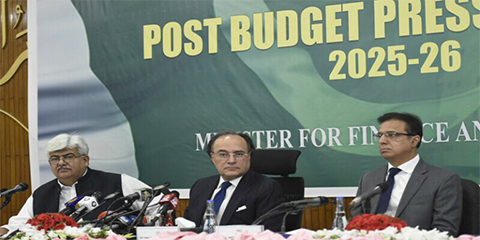
June 11, 2025: Journalists walked out of the post-budget press conference in Islamabad to protest the absence of a technical briefing and the government's dismissive behavior, calling it unacceptable and intolerable.
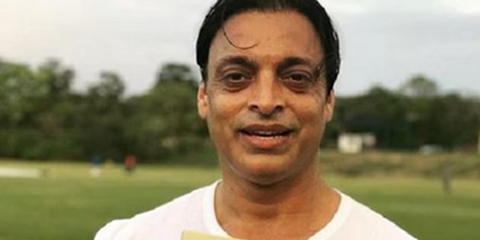
May 31, 2025: Dr. Nauman Niaz has issued a defamation notice to Shoaib Akhtar over derogatory remarks made during a recent broadcast, reigniting a longstanding media feud between the two prominent figures in Pakistan.

May 30, 2025: The Human Rights Commission of Pakistan has demanded the full repeal of PECA, citing its vague language, coercive powers, and threats to free speech and digital rights in Pakistan.
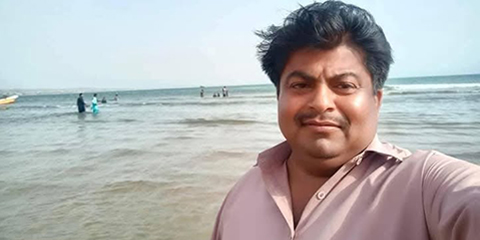
May 30, 2025: The Pakistan Federal Union of Journalists (PFUJ) has condemned the murder of journalist Syed Mohammed Shah in Jacobabad, calling for urgent justice and improved safety for media professionals in Sindh.

May 26, 2025: In Rawalpindi, police allegedly side with Jang Group to block 66 reinstated employees from resuming work despite court orders, drawing sharp criticism from unions and press freedom advocates.

May 25, 2025: PFUJ condemns the Jang Group's decision to dismiss over 80 employees in Rawalpindi, calling it an 'economic massacre.' The union warns of nationwide protests if workers are not reinstated.
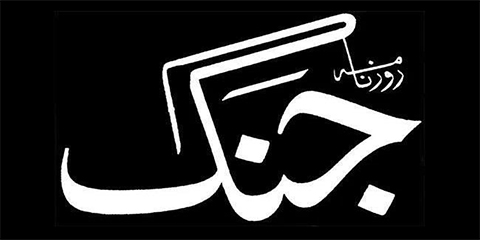
May 25, 2025: Daily Jang Rawalpindi has terminated over 80 employees, including female staff, despite multiple court rulings in their favor—raising concerns over labor rights violations and misuse of authority in Pakistani media.
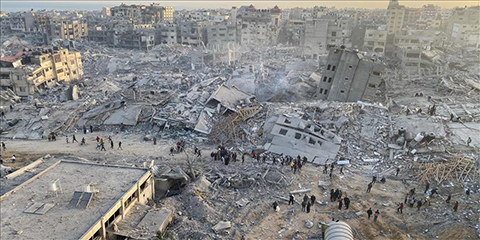
May 19, 2025 PJS reports 219 Palestinian journalists killed in Israeli attacks since October 7, with 30 women among the victims. Over 430 were injured and 685 family members were killed. Read more on the systematic targeting of media in Gaza.

May 15, 2025 Discover the legacy of Samiullah Khan, Pakistan’s legendary "Flying Horse," whose breathtaking speed and artistry redefined hockey. From Olympic glory to World Cup triumphs, his story is one of myth, movement, and magic.
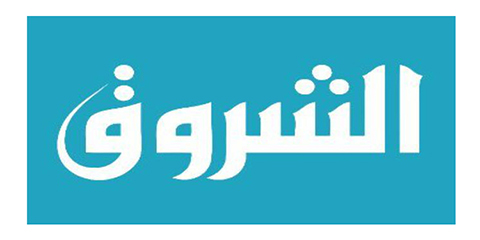
May 04, 2025 Algerian authorities suspend Echorouk News TV for 10 days after it used a racist slur against African migrants. ANIRA demands an apology, calling it a violation of human dignity.

May 04, 2025 NCHR and MMfD launch a journalism fellowship to train reporters on digital rights & gender inclusion in Pakistan. Supported by UNESCO, this initiative aims to bridge the gender digital divide. Apply by May 15, 2025!
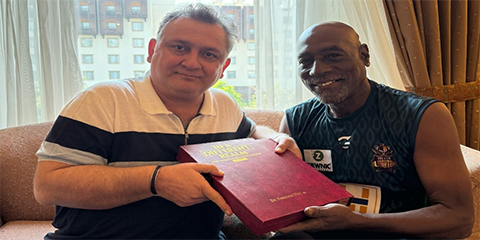
April 23, 2025 Discover Dr. Nauman Niaz’s In A Different Realm: Story of Quadruple & Triple Centuries 1876–2025, a profound exploration of cricket's most monumental innings, blending historical analysis with poetic narrative.